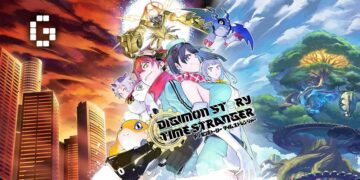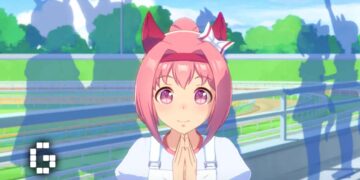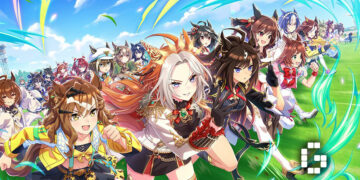Swing your blade with impressive flourishes as you experience greatness in Rise of the Ronin – Team NINJA’s first foray into an open world and an evolution of the studio’s best works. If you enjoy getting stomped and crushed, you would likely share a similar opinion that Team NINJA made some of the best highly challenging action games ever, from Ninja Gaiden to the Nioh series and Wo Long: Fallen Dynasty.
This year comes the arrival of Rise of the Ronin, arguably the studio’s most ambitious project to date, yet painted with the all-so-familiar signature fast-paced action from Team NINJA. Like the studio’s recent titles, the game takes place during a real historical period, but this time, with no mythological or highly fantastical elements.

What sets Rise of the Ronin apart from other Team NINJA titles is that the studio is taking the stylish sword clashes and gun blasting to open world, moving away from the traditional mission structure and dense level design the developers are known to craft. On this front, Team NINJA succeeded in crafting an intriguing open world design that will have you immersed in.
Ronin the Streets of Yokohama
The time period is the Bakumatsu era, a transitional period for Japan by the end of the Edo period, and the Boshin War rages on, sparking conflict between various factions opposing Tokugawa Shogunate after their welcoming to Western influences. As the heat of this great conflict continued, you walked into the game as one of the twin ronin of the Veiled Edge, embarking on a mission that have you in search of a mysterious figure across Yokohama. Searching across Yokohama you will, because the great city of Kanagawa Prefecture is a fairly large one, divided into 20 regions, each filled with a bevy of side activities to take part in and landmarks to explore.
This is a well-realized world, crowded city streets where two cultures converge, a Japanese land influenced by the West with foreign buildings, residents, and even firearms found on armed patrols. Portraits of the luxurious life, those in poverty, and different cultures collide – there is even a Chinatown to explore.

But Yokohama is not just a beautiful attraction for mere sightseeing because it is also packed to the brim with activities to get busy with, as mentioned earlier. One such activity is the Public Order, where you are tasked to clean up an area of heathens, troublemakers, or outlaws, allowing locals to reclaim their land and re-establish shops and facilities. The activities are diverse, you could search for lost cats, take snapshots of the city scenery, embrace fun minigame challenges, and even participate in Gliding challenges from the high hills of the Kariba region.

As you clear activities, you will earn Karma points, which can be redeemed for Rare Skill Points when you interact with the Veiled Edge Banner, the game’s bonfire-style checkpoint. Condensed amounts of side activities have always been a standard for open world design, and Rise of the Ronin did an incredible job at ensuring they are all enjoyable yet completable at a relatively good pace, making a 100% completion rate quite achievable at a respectable time.
This is not to say the game lacks content, but rather that the developers designed each region with focused content that rewards you accordingly and respects your time as a player, instead of flooding the map with hundreds of icons and repetitive activities with subpar rewards to pad out content and confuses you on how to progress.

A facility worth highlighting is the Longhouse, which is essentially your home base. This is where you access various features, such as organizing your storage or facilitating the Cat Concierge where you could rent out cats. Here you can also display your collection of items or speak to characters you have bonded as they stop by for a rest. For you fashionistas out there, there is also a feature that allows you to transmogrify your equipment, allowing you to change the appearance of garments and armaments with your preferred design while keeping its stats.
Stance Dancin’
Moving on to the real specialty of Team NINJA, challenging yet satisfyingly stylish and punchy combat. If you are familiar with previous Team NINJA titles, this game is right on your alley because the way combat works bears a great resemblance to them, especially the Nioh series. Like its predecessor, you can equip two main melee armaments, two ranged weapons, as well as a buckle set of slots for consumables. Controls are hyper-responsive and this time, your character is equipped with far more mobility, such as a combination of jump attacks and a grappling hook for lunging yourself to enemies in a distance or to hurl objects at them.

The strongest similarities to Nioh come in the forms of Combat Style and Blade Flash. Let’s talk about Combat Style first, this mechanic is basically a set of special fighting techniques associated with certain weapons, allowing you to swap them on the fly mid-battle. This obviously draws a lot from the Stance system from Nioh, attaching three different styles per weapon type and demanding you to utilize them where the situation sees fit. There is no one Style fits all, as each has its advantages and disadvantages against specific groups of enemies.
While fully utilizing Stances in Nioh is not necessarily mandatory to progress, Rise of the Ronin places a higher emphasis on understanding your Combat Style and how you would adapt to situations with them. Certain bosses would even alter their attributes, and swap out another weapon in the middle of combat, incentivizing you to pay your respect and counteract with different styles to gain back your footing. The earliest Style available to you in the game is Mumyo-ryu, which is quite fitting for novices to learn through the game due to its flexibility, but you unlock more as you progress, encouraging you to experiment with different styles of play.

The Dance Rages On
Then we have Blade Flash, a maneuvering technique you could execute after unleashing an attack, allowing your character to fling their weapon to the ground and remove the blood. Depending on how much blood has been accumulated, indicated by a gauge below the weapon icon on the HUD, you can restore a set amount of stamina or Ki as they call – allowing your character to continue their onslaught. There is no stopping you from retreating to restore Ki at a safer distance, but like Nioh, playing aggressively is very beneficial in giving you the upper hand. Managing well on utilizing Blade Flash, allows you to retain Ki while your enemies run out of them quicker, leaving them vulnerable to a high-damaging critical attack.
From the description above, some of you may immediately notice its similarity to the Ki Pulse maneuver from Nioh. Actually, it works exactly the same way, except that the Blade Flash hardly requires any sort of timing to execute, making it easier to master. It is a different story with Nioh, which has a very tight timing, and Yōkai enemies would leave miasma around, slowing your Ki regeneration greatly and forcing you to “get good” with Ki Pulse or get destroyed.

Endless Sword Clashes
While in combat, you can also perform the Counterspark, this game’s take on a perfect block and deflect mechanic. Following the pattern of Blade Flash, this mechanic is also not as tight to time when compared to other games with parries like Sekiro: Shadow Die Twice.
It goes without saying that each enemy has a different attack pattern and sometimes you would need to parry perfectly multiple times in a row before you could initiate a counterattack. An unsuccessful parry would leave you exposed, so there are risk and reward factors to consider.
Occasionally, enemies would also launch a special attack known as Martial Skill, indicated with a red aura. These attacks have a much smaller time window to be parried, but frustratingly, some of them cannot be parried at all, forcing you to evade or be punished. It would not be a problem if there were indications of which Martial Skill can be parried, but the game tells you none of it, so it is up to trial and error. At least we did find out that grapple attacks are the ones that Counterspark cannot withstand.

Team NINJA’s Brutality, Not
Venturing into Rise of the Ronin, it is clear that Team NINJA wants it to be more accessible to the more casual audience. Aside from being able to change the game’s difficulty at any time without restarting, there is no need to master complex combat mechanics such as the likes of Ki Pulse, Stance, Burst Counter, Yōkai Shift, or more, found in the Nioh series.
You would also not be tormented by enemies with unforgiving attacks that would slaughter you in an instant if you made a slight mistake. This is especially true when this game is crafted to be more grounded, with a more historically accurate take, pitting you against humans rather than fantastical monsters that have brutal attacks that can be difficult to anticipate. After all, a four-winged magical demon crane such as the Suan Yu from Wo Long: Fallen Dynasty would obviously be harder to read than Big General Man number two with a big sword. In fact, even at the highest difficulty (Twilight), the game is in no way not as brutal as previous titles, aside from a few major bosses.

This accessibility in difficulty can also be observed in the lighter RPG elements, such as the removal of the equipment load system, eliminating the need to worry about choosing the right equipment combinations while ensuring that they don’t hinder your character’s movements. The stat system is also a lot more streamlined with its main attribute only divided into four categories, namely Strength, Dexterity, Charm, and Intellect – all of which are now incorporated into the skill tree to simplify leveling.
Honestly, I don’t mind these changes at all as I would have to admit some of Team NINJA’s previous titles strayed into a level of brutality that may be too much for some players. Enemies’ movement can be fast and difficult to read, so you have to always pay extra focus to ensure not a single mistake is made and ends up crushed.
The game does sometimes bring you to missions with a more linear and closed-off level like how previous Team NINJA games are structured, and you cannot leave until it’s completed. During these missions, you are given the option to invite a Companion to assist you in the fight, and they could even be playable. This is a rather interesting take on the whole “summoning” system in Souls-like games and adds a lot of flavor to Rise of the Ronin.

Despite the more streamlined changes, I do find Rise of the Ronin to suffer from some uneven difficulty balance, as even if there are parts that remind you of the challenging fun of Nioh, there are plenty of missions that you could just easily breeze through, especially with extra help from summoned Companions. You won’t even be presented with a game over when you fall in battle because you would just be switched to play your companion, who is able to revive you with items anyway. Ultimately, this is a game made to be more accessible to the general audience, and less of an extreme masochistic challenging title.
Rise of Warring
As previously mentioned, you play as one of the twin warriors of the Veiled Edge during the Edo period and what is cool is that you could customize both the twins during character creation. If you have played any other previous Team NINJA title, the character creator is something you might be used to, equally robust, and offers familiar hairdos that are also found in Nioh or Wo Long.

As one of the twins, you would be meeting some rather interesting bunch of characters throughout your journey, most are historical figures such as Ryoma Sakamoto, Taka Murayama, Matthew Perry, and many more. As with any story of conflict, you would have to choose to side with one of them, opening up branching stories depending on your faction of choice – whether you opposed Western influence and aimed to gain freedom for Japan with the Anti-Shogunate, or siding with important figures in the government to quell the rebellion.
Your choices matter and your support for either faction will impact the overall story. If you are unsure which faction to support, the game does allow you to deepen relationships with important characters with the bond system, allowing you to learn more about their backgrounds. You might even gain Favor levels and form romantic relationships with them.

PlayStation 5 Performance
As the game is developed as a PlayStation 5 exclusive, it does offer a more specialized experience with reliance on the console’s features. There are three graphical modes for the game, which are: Prioritize FPS, Prioritize Graphics, and Ray Tracing. Moreover, you can further customize the game to your liking with other graphical options. Although there are different modes, there is hardly any difference in them graphically, while in other games you could notice huge differences.
Since the game puts focus on fast-paced action gameplay, responsive control is key to a better experience, so Prioritize FPS would be the best choice to play the title, especially since there are not many visual differences between modes as mentioned earlier.
The game does utilize DualSense features, immersing you into the world. You could feel the sensation of firearms with the Adaptive Trigger, from firing to reloading the weapon by pressing L2 to the middle limit.

Truly Team NINJA’s Best
Utilizing their specialization in designing high-quality action games, what Team NINJA offered with Rise of the Ronin is without a doubt a major evolution of what they are best at. By being more welcoming with a less complex RPG system, a solid open world full of surprises, and an addictive punchy combat system, Rise of the Ronin is easily one of the the best action games to grace the PlayStation 5.
Sure, there are some standard open world tropes to be found in the game, but Team NINJA manages to ensure a present experience without bloat content that strays you away with time. With its focus on branching storylines full of consequences and colorful characters with a deep bonding system, Rise of the Ronin is undoubtedly rich in replayability. Need to say more for the combat portion? Because even if it is much more streamlined this time, the action mechanic is still designed with top-notch quality you’d expect from Team NINJA with stylish moves that get your dopamine running.

There are still shortcomings, but it might just be nitpicking for me, such as the unfortunate uneven difficulty. Regardless, Rise of the Ronin is like an open world compilation of Team NINJA’s coolest action gameplay with a welcoming warmth towards newcomers.
Rise of the Rōnin is slated to launch exclusively on the PlayStation 5 on March 22, 2024. Review code provided by Sony Interactive Entertainment.

Join Us!
We are recruiting! If you want to break into the gaming media industry, don't miss out on the golden opportunity. Find out more: Malaysia. Overseas.Featured Video
The Review
Rise of the Rōnin
PROS
- Interesting story with branching paths and decision consequences
- Satisfying, stylish combat of what you'd expect from Team NINJA with a great variety of weapons and Combat Style
- Open world design that is fun to explore and rewards your time
- More welcoming with more streamlined systems
- You can pet adorable cats and dogs!
CONS
- Being more accessible in terms of difficulty also means the challenge fans expect from Team NINJA is diminished

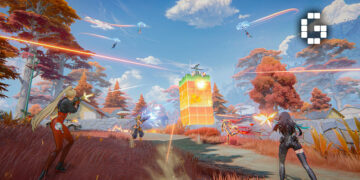

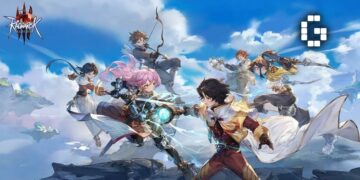
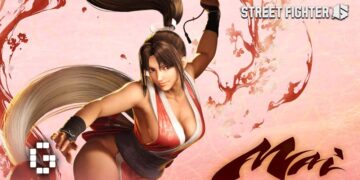





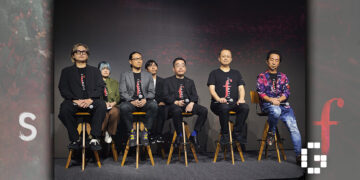

![[EXCLUSIVE] Creative Masterminds from Gearbox Software Reveal What Makes Borderlands 4 Worth the Wait](https://cdn.gamerbraves.com/2025/07/Borderlands-4-at-Bilibili-World-2025_Interview_FI-360x180.jpg)


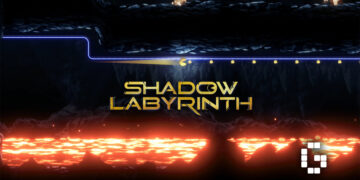

![[ASIA EXCLUSIVE] Bringing Back a Classic: Inside the Making of FINAL FANTASY TACTICS – The Ivalice Chronicles](https://cdn.gamerbraves.com/2025/06/FFT-Ivalice-Chronicles_Interview_FI2-360x180.jpg)





